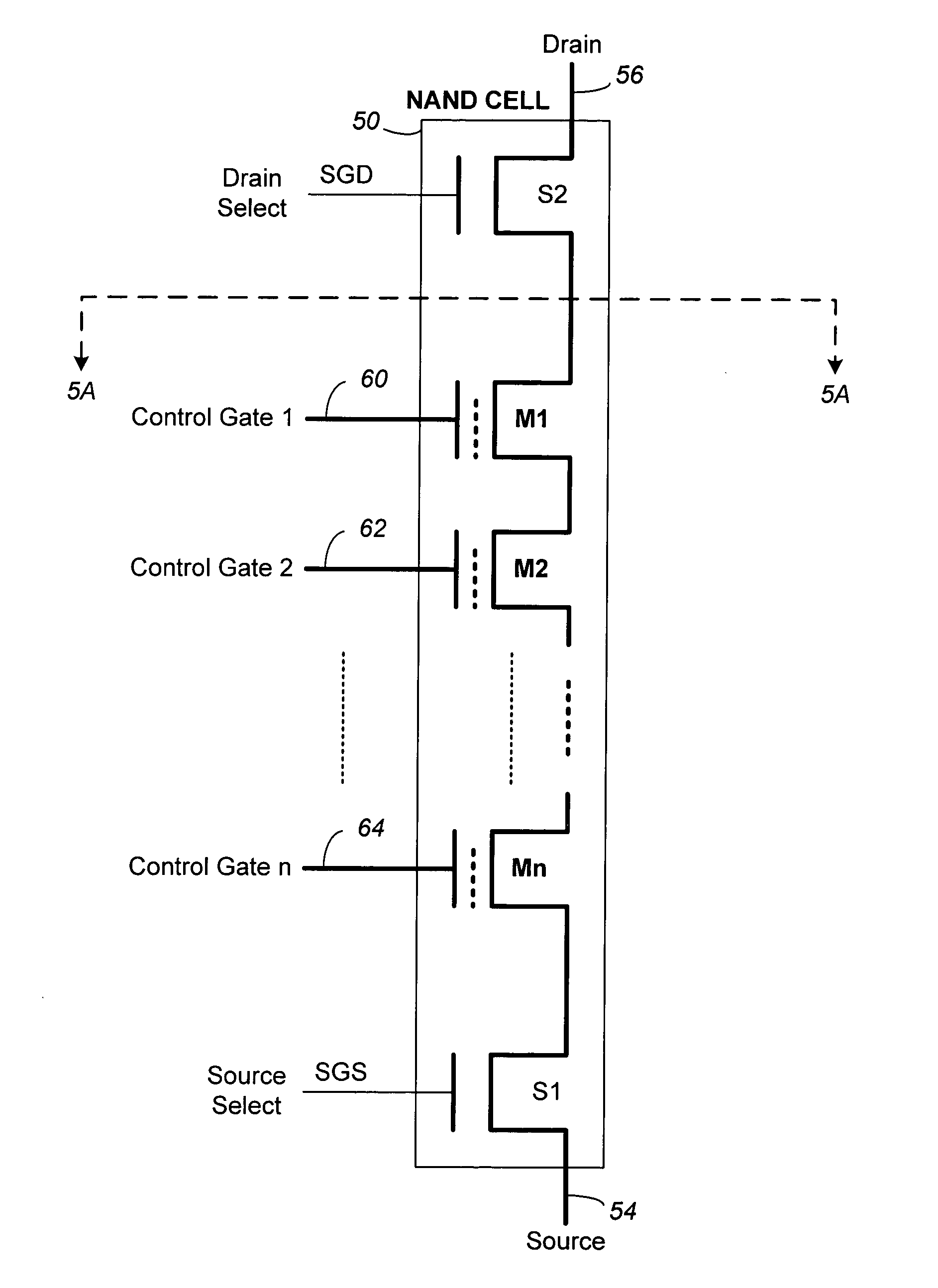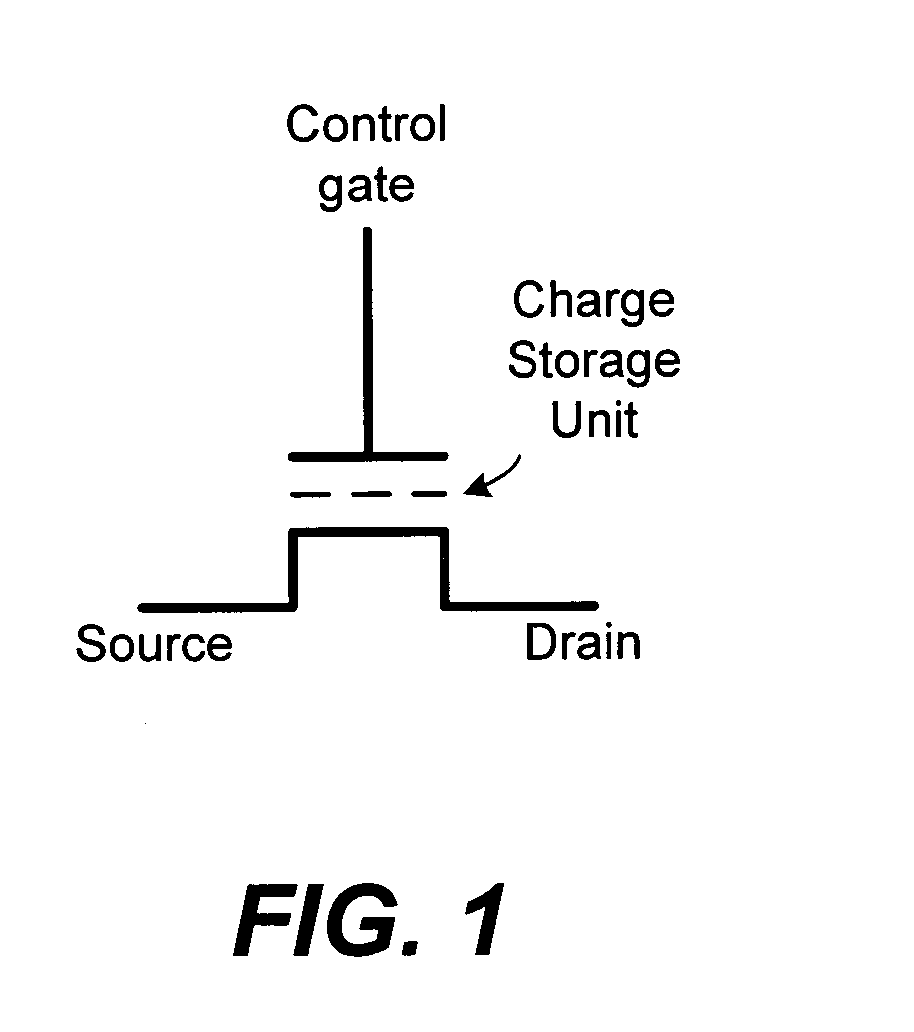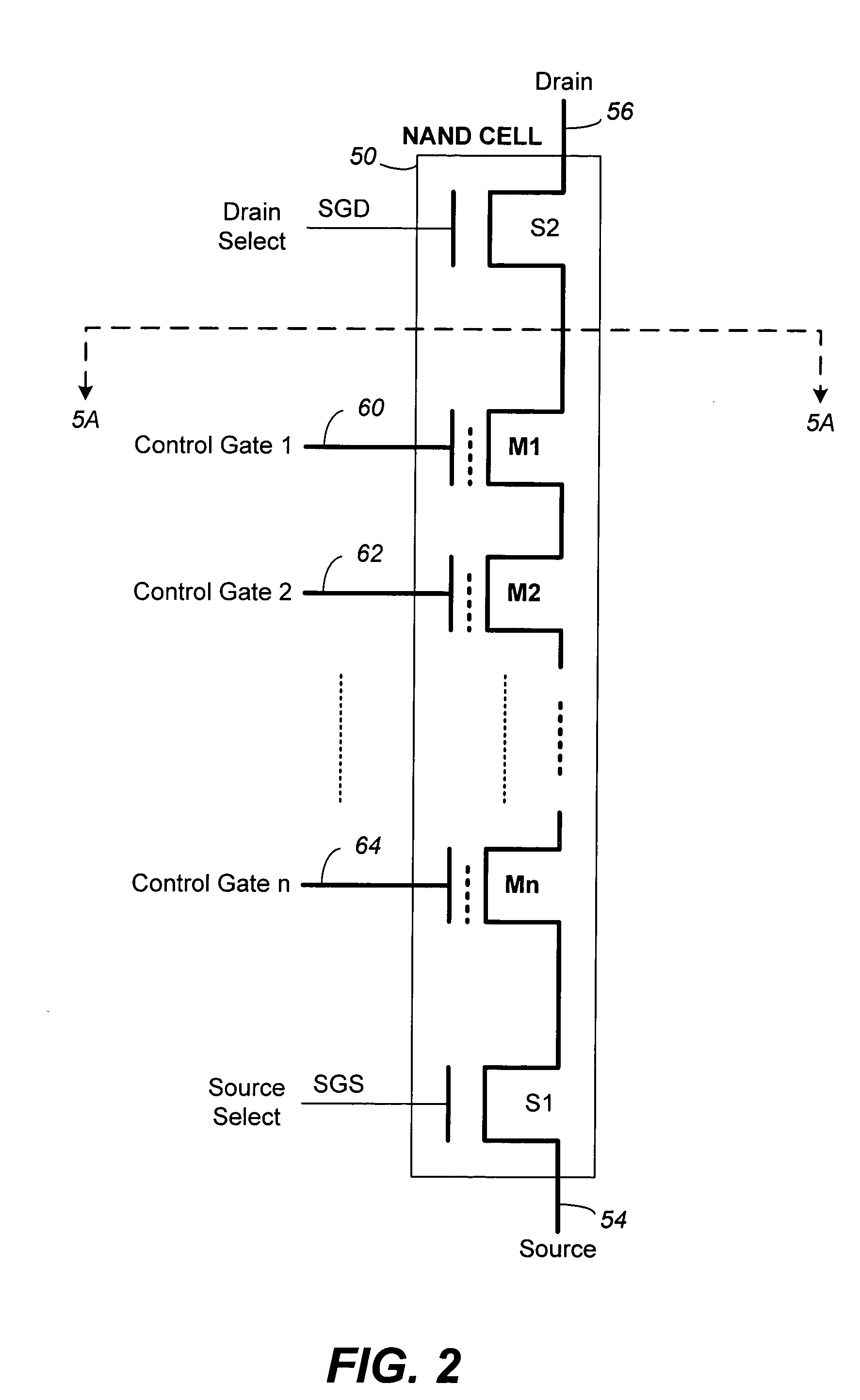Non-volatile memory and method with bit line coupled compensation
a non-volatile memory and bit line coupled technology, applied in static storage, digital storage, instruments, etc., can solve the problems of unsuitable mobile and handheld environment, prone to mechanical failure, and bulky disk drives, and achieve high capacity, non-volatile memory devices of high performance, and disturbance effects inherent in high-density chip integration
- Summary
- Abstract
- Description
- Claims
- Application Information
AI Technical Summary
Benefits of technology
Problems solved by technology
Method used
Image
Examples
first embodiment
[0083] In the first embodiment just described, the second compensatory bit line boosting occurs before the first boosting. This provides a maximum range of possible ΔV1. On the other hand, it also means that the bit line of the memory transistor to be programmed will become floated and it voltage susceptible to be moved by subsequent high programming voltages. However, it has been estimated that the bit line capacitance is considerably greater than the channel capacitance, and therefore, even if the bit line is floated, the bit line and channel voltage will not change much when a high programming voltage appears on the control gate.
second embodiment
[0084] Alternatively, the first boosting is started first, followed by the second boosting. In this way, any coupling to the floated bit line due to high programming voltage is minimized.
[0085] FIGS. 9(A)-9(G) are timing diagrams illustrating the voltage compensation scheme by capacitive bit line-bit line coupling during program operations, according to a second embodiment of the invention.
[0086] Bit Lines Precharge & Boosting Phase:
[0087] (1) The source select transistor is turned off by SGS at 0V (FIG. 9(A)) while the drain select transistor is turned on by SGD going high to VSG (FIG. 9(B)), thereby allowing a bit line to access a NAND chain.
[0088] (2) The bit line voltage of a program inhibited NAND chain is raised (in the first of a two-step rise) to a predetermined voltage given by VDD −ΔV1 (FIG. 9(F)). This predetermined voltage is sufficient to cut off the drain of the NAND chain from its bit line when SGD drops to VDD in (3), thereby floating the channels therein. At the...
PUM
 Login to View More
Login to View More Abstract
Description
Claims
Application Information
 Login to View More
Login to View More - R&D
- Intellectual Property
- Life Sciences
- Materials
- Tech Scout
- Unparalleled Data Quality
- Higher Quality Content
- 60% Fewer Hallucinations
Browse by: Latest US Patents, China's latest patents, Technical Efficacy Thesaurus, Application Domain, Technology Topic, Popular Technical Reports.
© 2025 PatSnap. All rights reserved.Legal|Privacy policy|Modern Slavery Act Transparency Statement|Sitemap|About US| Contact US: help@patsnap.com



